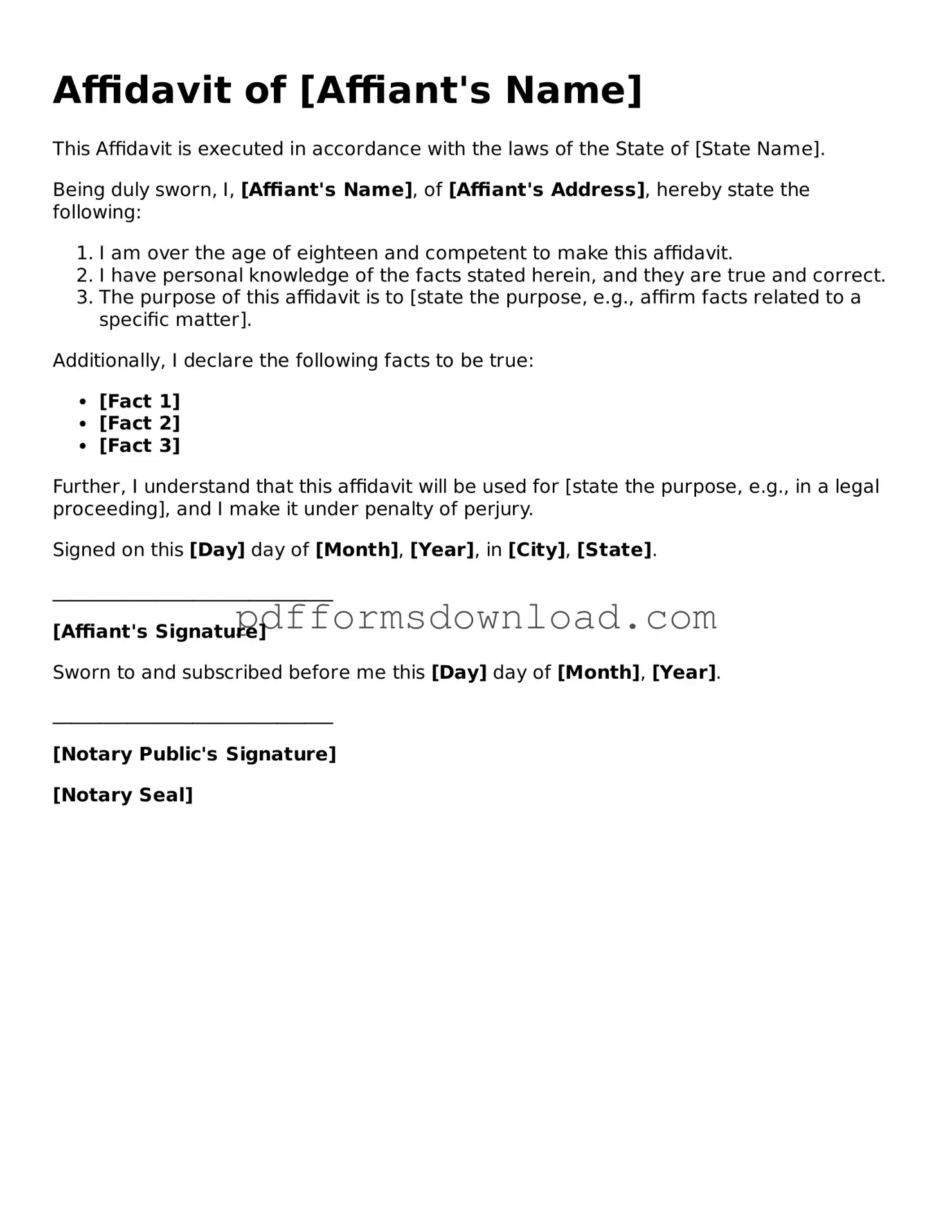What is an affidavit?
An affidavit is a written statement that a person swears is true. It is often used in legal situations to provide evidence or support a claim. The person making the affidavit, known as the affiant, must sign the document in front of a notary public or another authorized official.
When do I need to use an affidavit?
You may need to use an affidavit in various situations, such as during court proceedings, when applying for certain licenses, or when verifying information for a legal matter. It serves as a formal declaration of facts that can be used to support your case or application.
How do I complete an affidavit?
To complete an affidavit, you should start by clearly stating your name and address. Then, outline the facts you want to declare. Be concise and specific. After writing the statement, sign it in the presence of a notary public, who will verify your identity and witness your signature.
Do I need a lawyer to create an affidavit?
No, you do not necessarily need a lawyer to create an affidavit. However, consulting with one can help ensure that your affidavit is properly drafted and meets all legal requirements for your specific situation.
What happens if I lie in an affidavit?
Lying in an affidavit is considered perjury, which is a serious offense. If you are found to have intentionally provided false information, you could face legal penalties, including fines and imprisonment. It is crucial to ensure that all statements in the affidavit are truthful and accurate.
Can I change an affidavit after it is signed?
Once an affidavit is signed and notarized, it cannot be changed. If you need to correct or update the information, you will need to create a new affidavit. Make sure to reference the original affidavit in the new document for clarity.
Where do I file an affidavit?
The filing location for an affidavit depends on its purpose. For court-related matters, you typically file it with the court where your case is pending. For other uses, such as property transactions or business matters, you may need to file it with a specific government agency or office. Always check the requirements for your particular situation.
